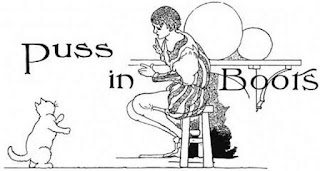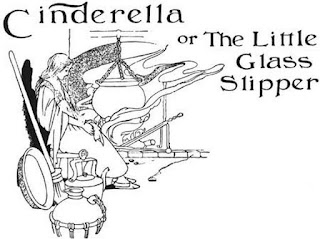Puss in Boots
Puss in Boots, illustrated by Charles Robinson
Puss in Boots is a classic fairy tale written at the end of the 17th century by Charles Perrault, with origins in Basile's (Cagliuso / Gagliuso) and Straparola's (Constantino Fortunato) works from the 16th and the beginning of the 17th century. We can trace it to Girolamo Morlini and even further but we'll rather focus on this version, published in The Big Book of Fairy Tales in 1911.
The story starts like many other fairy tales. Father dies and his three children are facing a life-changing situation.
In this case, we are dealing with a dead miller who had three sons. The eldest inherited a mill, the middle son had got a donkey, and the youngest a cat.
While the first two boys possess something obviously useful to make a living, the youngest doesn't know what to do with the cat. He even thinks it would be best to skin it and use its fur for a pair of gloves or something.
At that moment the first enchanting moment happens and leads to a surprising series of events. The cat can talk. He asks his master for a pair of boots and promises he will make him rich beyond his wildest dreams.
The youngest son fulfills the cat's wish and the cat starts working on his master's success. He goes to the king's forest where a lot of partridges and rabbits live and steals them.
He uses his loot to enter the castle. He donates partridges and rabbits to the king who is very satisfied with given presents not realizing that everything comes from his property.
Puss in Boots tells him that everything comes from the Marquise de Carabas who is, of course, a fictional person, invented by the clever cat.
Puss persistently develops the story about his master who is supposedly a nobleman. King becomes more and more curious and wants to meet him. But a poor miller's boy can't pass as a Marquis of Carabss, so the cat organizes his next trick.
He waits until he gets information about the king driving in his carriage with his daughter by the lake. Puss instructs his master to get rid of his clothes and goes into the water. Then Puss jumps in front of the carriage with the king and the princess explaining that his master was just robbed of everything.
The king is more than willing to help with precious clothes and the miller's boy instantly looks like a nobility. The princess likes him as well.
The cat has just one more step before his plan is finished. He runs in front of the carriage threatening everybody to tell the king that the owner of all properties around is Marquis of Carabas. The real owner is an ogre who is able to shapeshift.
Puss again uses his most powerful characteristic: flattery. He convinces the ogre to change into a different animals and when he frivolously turns himself into a mouse, simply eats him.
The castle and the properties of the dead ogre are ready to accept the Marquis of Carabas and when the king arrives, the illusion is completed. There is, of course, a splendid feast and a marriage of the miller's boy with the princess. The king gives half of his kingdom to his son-in-law and the other half becomes his after the king's death.
So the youngest son actually gets the most precious part of the miller's inheritance.
And the cat? He becomes a minister. With so important position in the castle, he catches mice only for sports from then on.
The moral of the story is, to put it mildly, questionable. Yes, climbing up the social ladder is possible, but you can achieve a good position only after lying, stealing, threatening, and even murdering.
There were many attempts to 'correct' this story which very likely started as a mockery trickster tale but caught on with the audience and is popular for at least five centuries.
One such attempt was made by Edgar Behme and you can check for yourself how successful it was:
https://ameblo.jp/greatoldbooks/entry-12824904818.html
Maybe we should take a step back and put ourselves in the position of the youngest miller's boy. He wasn't lucky by his birth and life didn't give him the best start. Anyway, he used what he had as its best.
This can be a very valuable lesson and children definitely understand it. Maybe even better than adults!









Komentarji
Objavite komentar